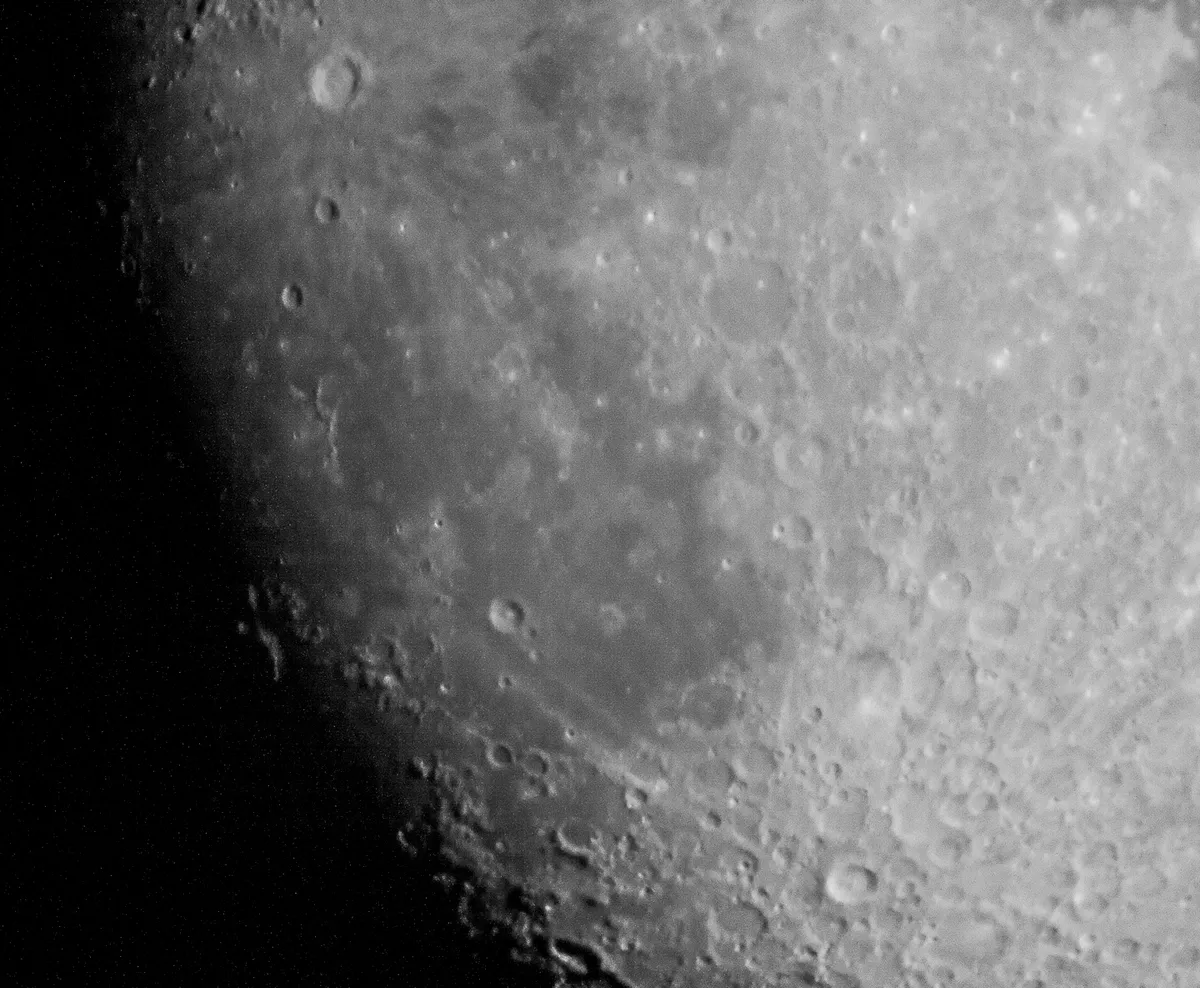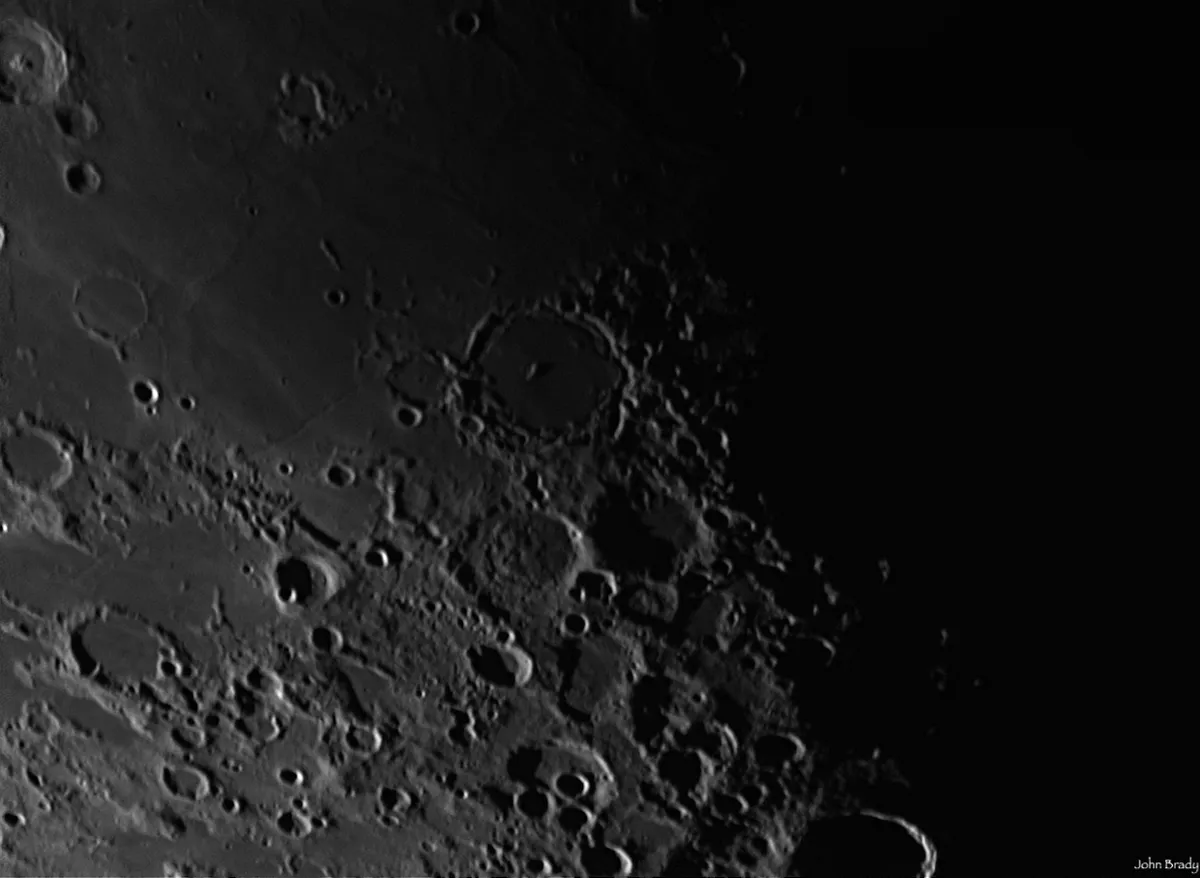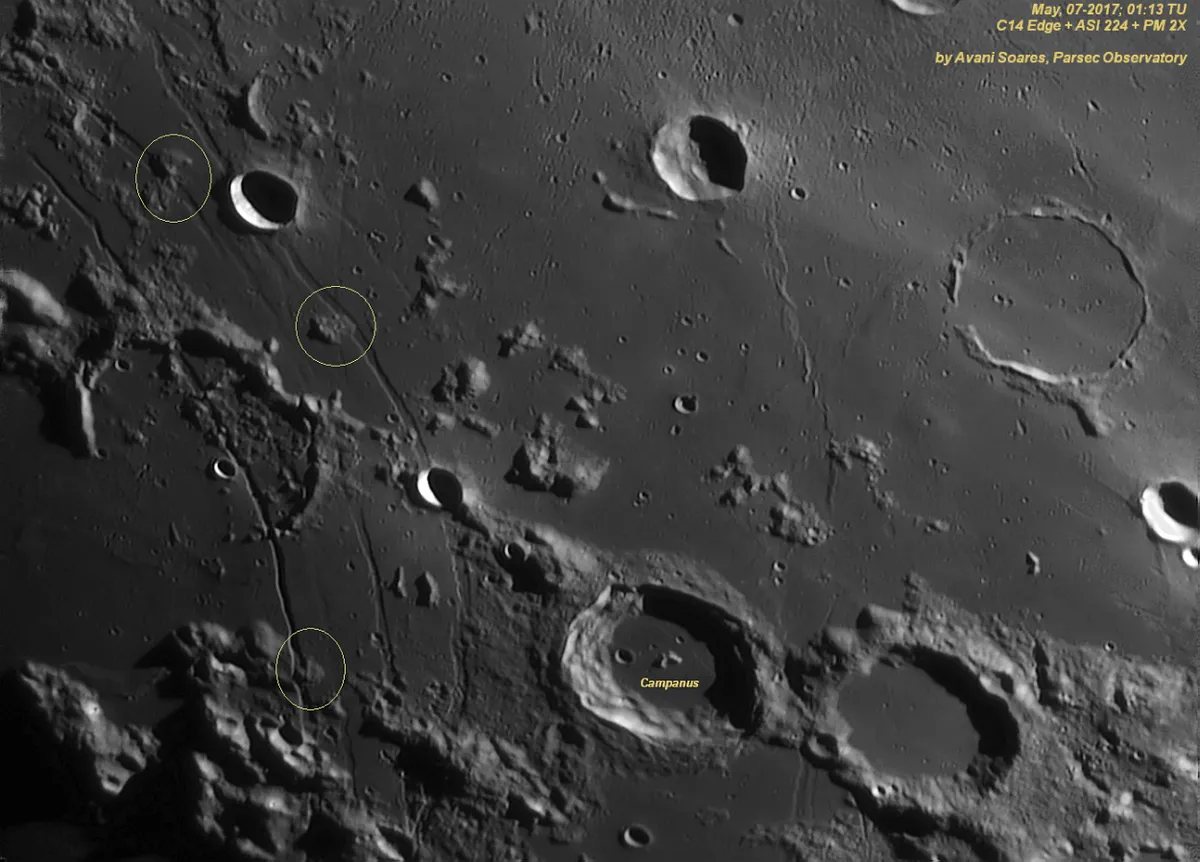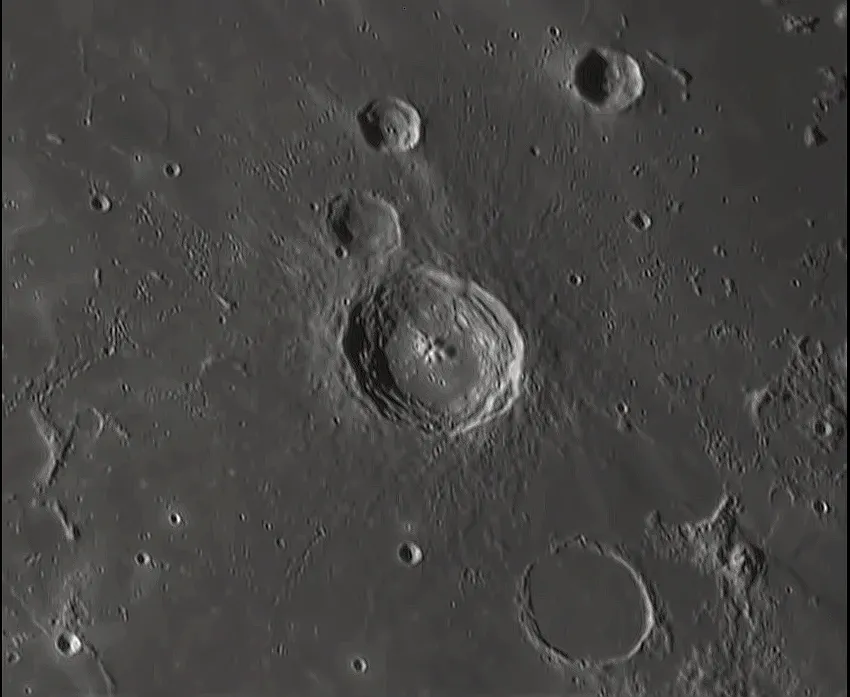Rupes Recta, also known as the ‘Straight Wall’ is a most curious linear feature. Roughly on a vertical centreline of the Moon’s face, about one-third of the way up from the southern pole, it is easily seen with a small telescope when the lighting is right.
And here, lighting is very important indeed.When the Sun is at the right angle, the Straight Wall becomes quite obvious.
For more info on lunar observing, read our guides on how to observe the Moon and the best features on the Moon.
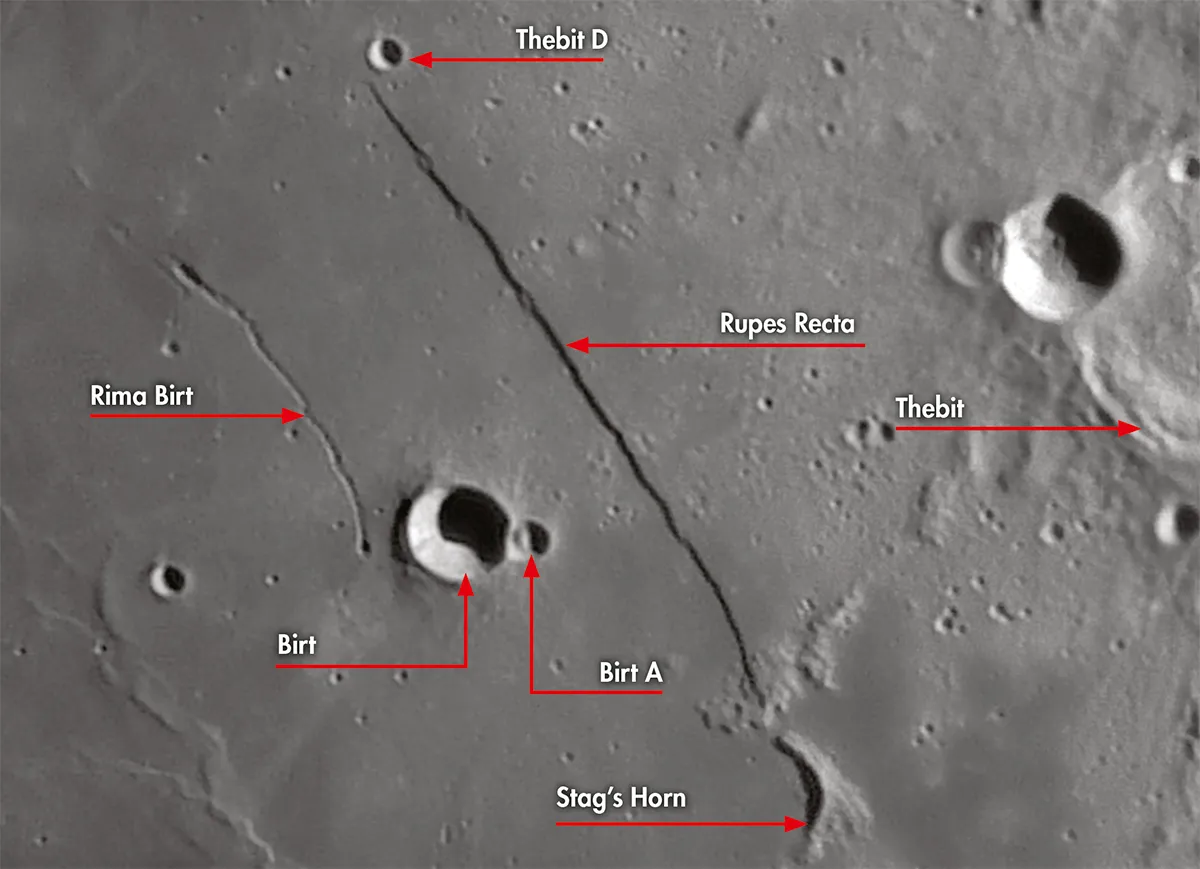
One day after the first quarter Moon, the rising Sun makes it cast a dark shadow to the west, giving the impression it must be a massive, high cliff.
As the Moon reaches its last quarter phase, the Sun’s light illuminates the Straight Wall from the other side, causing it to appear bright.
The reason for this difference in appearance is that the Straight Wall isn’t a wall or cliff at all – it’s a slope.
Facts about Rupes Recta
- Size:110km long, 2-3km wide
- Age:Between 3.2 and 3.9 billion years
- Location: Latitude 20.0°S, longitude 7.7°W
- Recommended observing equipment: 3-inch telescope
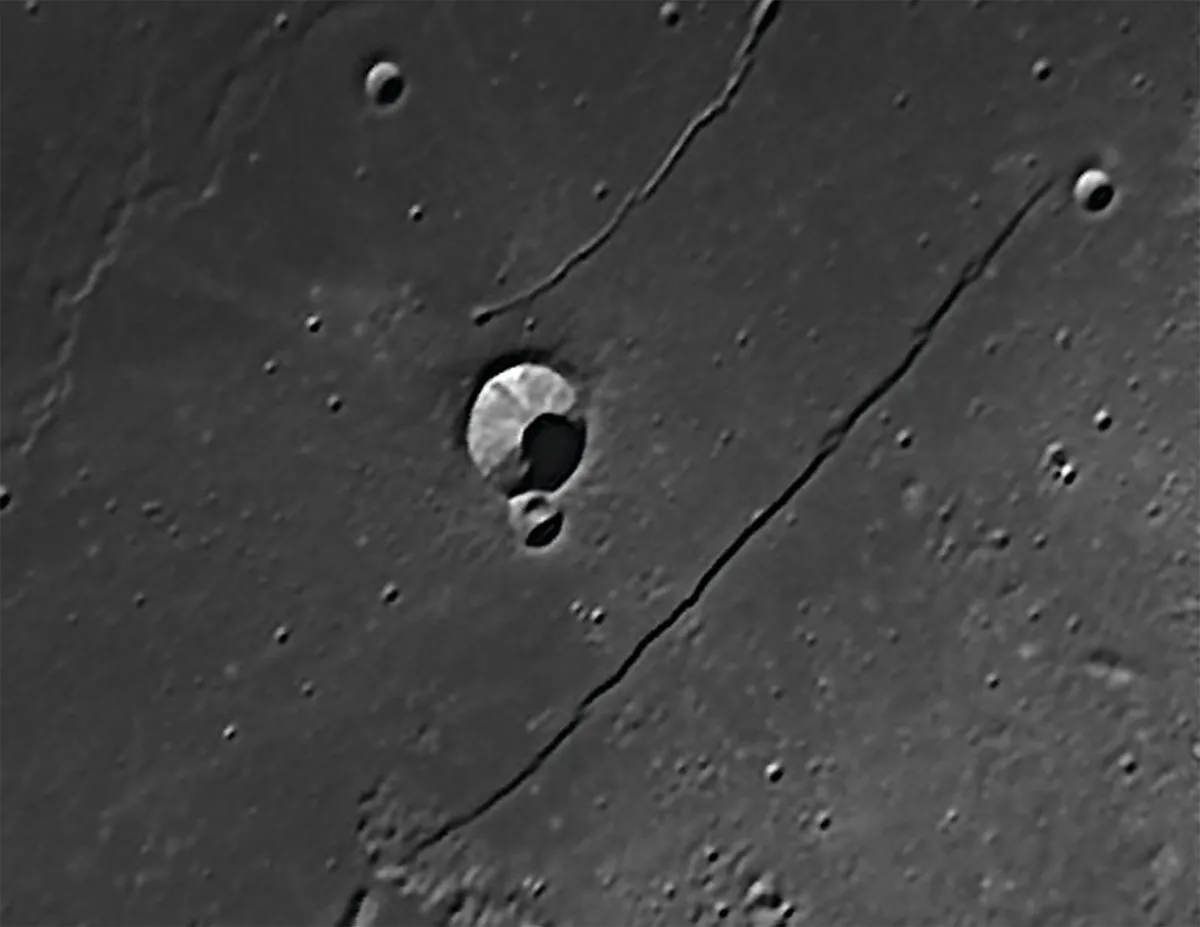
When the Sun’s light comes from the east one day after first quarter, the difference in height between the higher eastern side and lower western side is enough for a shadow to form and engulf the slope – hence the dark ‘line’ appearance.
At last quarter the Sun’s evening light, now coming in from the west, falls directly on the slope, so instead of a shadow it is lit up.

Amazingly, the slope that looks so dramatic from Earth is actually quite a gentle affair, with an inclination estimated to be around 10º, rising to a height of about 0.3km.
The Straight Wall is an example of what’s known as a linear fault, where the portion of surface to the west has dropped relative to the surface to the east.
Although it is referred to as being straight, a large telescope will show that there are kinks along the fault.
How to see the Straight Wall on the Moon

The Straight Wall runs across the centre of an unnamed broken crater for around 110km from north-northwest to south-southeast.
It starts close to the 5km-wide crater Thebit D in the north and finishes within a cluster of mountains to the south.
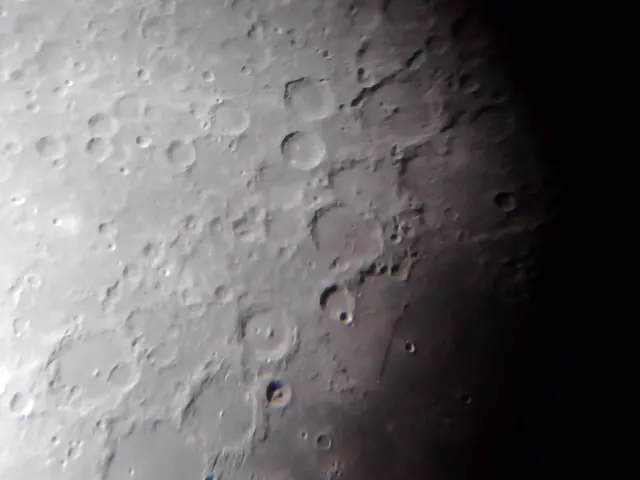
Part of this mountain range contains a peculiar crescent shaped feature sometimes referred to as the Stag’s Horn. If you have a good imagination this can be seen as a cutlass handle, the wall representing the blade.
You can find it towards the eastern edge of the Mare Nubium, 94km to the west of the 60km-wide crater Thebit.
Immediately to the west of the fault is the17km-wide crater Birt; a short distance to the northwest is a rille known as Rima Birt. This is a lot harder to see than the Straight Wall itself, requiring a 12-inch or larger telescope.
Other features to spot in Mare Nubium
Below is a selection of images of Mare Nubium and lunar features found in the area. Once you've found Rupes Recta, see if you can find these.
For more info on lunar imaging, read our guide on how to photograph the Moon. And don't forget to send us your images or share them with us via Facebook, Twitter and Instagram.
